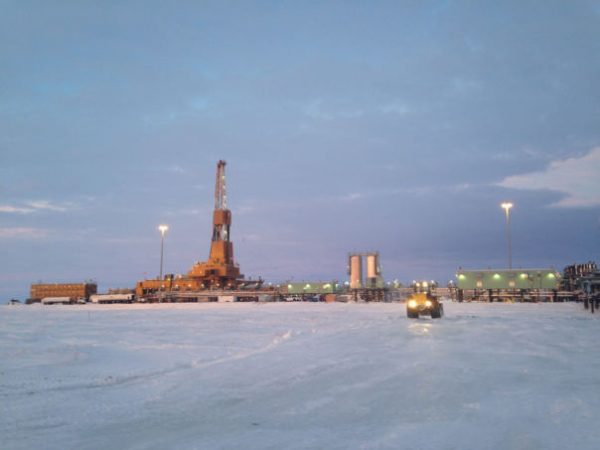
As global oil prices have soared following Russia’s invasion of Ukraine, there’s been cause for a lot of optimism in projections for Alaska’s mostly oil-driven state revenue.
But prices and production are at play in the revenue equation. So with oil above $100 a barrel, some Alaskans have wondered: Will oil companies now be drilling for more oil here?
Not likely, says longtime oil industry observer Larry Persily, who’s worked and reported on oil and gas issues in Alaska for decades.
Persily says the two main Alaska projects under development — Oil Search’s Pikka field and ConocoPhillips’ Willow project — were already in the works, and he hasn’t seen any other large projects that would go forward because of recent high oil prices.
Listen here:
[Sign up for Alaska Public Media’s daily newsletter to get our top stories delivered to your inbox.]
The following transcript has been lightly edited for clarity.
Larry Persily: I don’t see where today’s high prices, last month’s high prices, next month’s high prices are really going to change anything for Alaska production. There’s such a long lead time in Alaska to bring a project to production, it costs so much money, there’s so much risk. You can’t drill up here 365 days a year, like you can in Texas or offshore Gulf of Mexico. You’re also restricted in that it’s very expensive to develop up here, as opposed to hooking up your drilling rig to the back of a pickup truck and driving somewhere in North Dakota or Texas. So you need more oil. You need a bigger oil find here to pay the cost. You need more time to develop it.
And the other thing working against Alaska, which has nothing to do with Ukraine or high prices, is more and more shareholders, companies, investors, lenders, financial firms, insurance companies are distancing themselves from investing in fossil fuel, coal, but particularly Arctic oil and gas. They just don’t want the push back and the headlines that say, “Oil major puts money into Arctic.” It’s not an attractive headline these days.
Casey Grove: I guess I understand there are the projects in the works. But in general, if a producer is making more money, do they then have more money to explore and potentially develop things in the future?
LP: Right, because a company’s capital budget, their spending on long-term projects, is going to be dependent on how much cash they have. But also it’s going to depend on the outlook for the future and what other prospects they have. I was just in Calgary last week for an oil and gas conference, and people were talking about this a lot, that the question for investors, for oil and gas companies is, “OK, high prices today, a lot of demand today, but do I put a lot of money, billions of dollars, into something that may not be producing till 2026, 2027, ’28? And something that’s going to have to produce for a long time to pay back my investment in my profits? Is the demand going to be there? Or will the world, because of high energy prices, accelerate the transition to renewables?” If you think that acceleration, that energy transition, is going to come sooner because of high prices, maybe you’re a little skittish in investing money in long-term projects, you look for smaller projects, more easily developable projects, such as in Texas, for example, where you can get in and get your money out before the world changes on you.
CG: And then one other thing I need to ask you about is President Biden’s order last week to release oil from the Strategic Petroleum Reserve. Does that decision have any relevance to Alaska, either on production or I guess the the price of oil?
LP: No, it has no impact on Alaska’s production. Oil Search and Conoco are going to make their decisions, their corporate investment decisions, on their projects, regardless of Biden drawing this down. I guess what Alaskans may see from the drawdown of a million barrels a day from the U.S. Strategic Petroleum Reserves starting next month for six months, if it succeeds in lowering prices at the pump for gasoline and diesel, Alaskans will — I don’t know if the word is “enjoy” — but Alaskans will benefit from that just like everyone else in the country, and that’s really why the president did it. If you put that much more oil into the U.S. market, maybe it will help hold down or drive down gasoline prices a bit, but we don’t know that yet.
Casey Grove is host of Alaska News Nightly, a general assignment reporter and an editor at Alaska Public Media. Reach him at cgrove@alaskapublic.org. Read more about Casey here.





